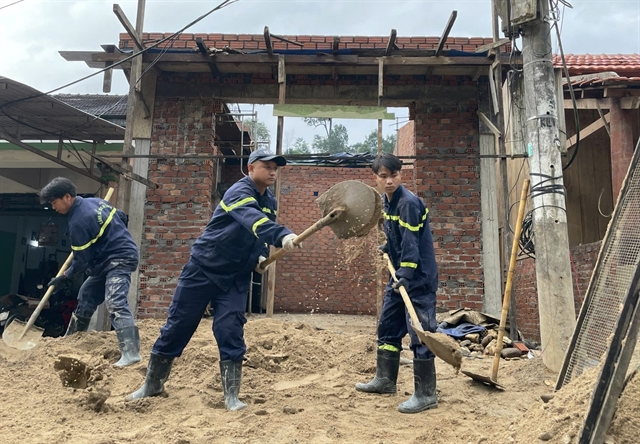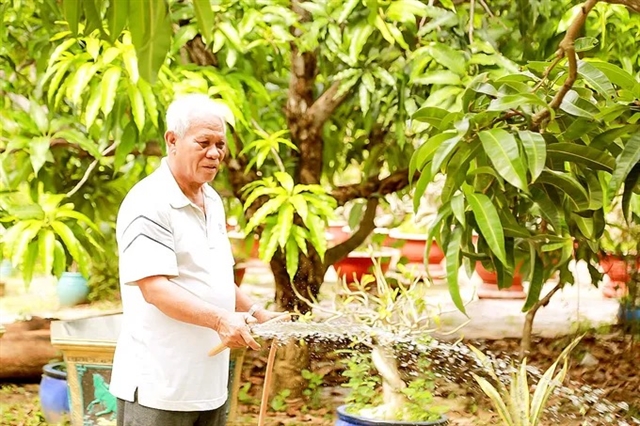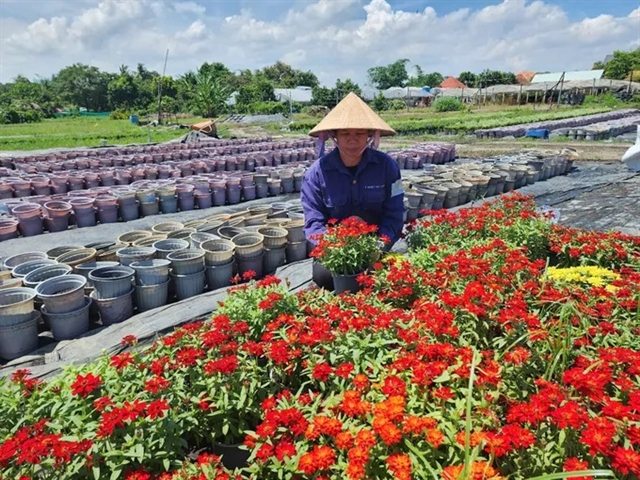 Society
Society

 |
| Farmer Đoàn Thanh Tường tends to his mango orchard in HCM City’s Cần Giờ Commune . His VietGAP-certified farm yields high-quality mangoes with minimal pesticide use. — Photo sggp.org.vn |
HCM CITY — As part of its urban restructuring strategy, HCM City is transforming its suburban and peri-urban areas into high-tech agricultural zones, aiming to boost rural prosperity while strengthening the city’s ecological resilience and food security.
While the city remains the economic powerhouse of the southern region, known for rapid industrialisation, its agricultural sector, including the newly integrated areas of Bình Dương and Bà Rịa - Vũng Tàu, is evolving through innovation, technology, and sustainable practices.
In Cần Giờ Commune, 66-year-old Đoàn Thanh Tường has turned his 5,000sq.m mango orchard into a model of sustainable farming.
Using VietGAP standards and automated irrigation, he grows high-quality mangoes that thrive on sea breezes and rich alluvial soil, generating about four tonnes per year.
With profits averaging VNĐ350 million (US$13,750), he has not only earned city-level recognition but has also inspired 37 other households to adopt similar methods.
In Long Bình Ward, entrepreneur Nguyễn Thị Thanh Thùy has grown an ornamental flower business from a few beds in 2003 into a 20,000sq.m garden with annual revenue approaching VNĐ4 billion (US$157,000).
Supplying over 50,000 decorative plants each year, her operation supports landscaping and festival needs across the southeastern and southwestern regions.
Elsewhere, in Bà Rịa - Vũng Tàu, Lâm Ngọc Nhâm, director of Bầu Mây Agriculture - Commerce - Tourism JSC, is leading a high-tech farming revolution by intercropping pepper and yam on 15 hectares.
Each hectare generates an impressive VNĐ4 billion annually. His company has also developed 30 products from seedless pepper and Chinese yam, and collaborates with farmers to grow 1,700ha of organic pepper.
In addition, it offers farm-based eco-tourism experiences that draw thousands of visitors each year.
In Tân Uyên Ward (formerly Bạch Đằng Commune in Bình Dương), pomelo orchards, red-tiled roofs, and shaded village paths reflect the area’s preserved rural charm.
“People here retain not only their pomelo trees but also their communal values and relaxed southeastern culture,” said Nguyễn Hữu Tâm, director of the Bạch Đằng Pomelo Cooperative.
Tân Uyên is also developing into a ‘smart village’ with digital public services like lighting and free Wi-Fi. Farmers are being trained to use apps to monitor crops, manage irrigation, and sell produce online, opening new doors for efficiency and market access.
These success stories highlight a major shift: rural development is no longer seen as secondary to urban expansion. Instead, it is a strategic pillar supporting the megacity’s long-term sustainability.
In Cần Giờ alone, there are now 219ha of mango cultivation, producing 2,400 tonnes in 2024.
With prices ranging from VNĐ65,000 to 90,000 ($2.5–3.5) per kilogramme, farmers are earning between VNĐ600 million and 700 million ($23,000–26,800) per hectare, according to Nguyễn Ngọc Xuân, secretary of the Bình Khánh Commune Party Committee.
Cần Giờ’s mangoes have also earned a four-star OCOP (One Commune One Product) certification, with local authorities helping farmers register production area codes to meet export requirements.
Elsewhere in the city, high-tech agriculture is expanding in An Nhơn Tây, Bình Lợi, and Long Trường communes. These zones are testing new models in crop production, aquaculture, livestock, and plant breeding.
 |
| Nguyễn Thị Thanh Thùy in Long Bình Ward in HCM City has built a 20,000sq.m ornamental flower garden, generating billions in annual revenue from decorative plants. — Photo sggp.org.vn |
Võ Thành Giàu, deputy director of the city’s Department of Agriculture and Rural Development, said the city’s agricultural success is thanks in part to fertile land and abundant water from the Đồng Nai, Bé, and Sài Gòn rivers.
“With Bình Dương and Bà Rịa - Vũng Tàu now officially part of the city’s administrative structure, we’re seeing new synergies in technology, logistics, and market access,” he told Sài gòn Giải phóng (Literated Sài gòn) .
The department is implementing the Politburo’s Resolution No. 57-NQ/TW, which promotes breakthroughs in science, innovation, and digital transformation. Priorities include helping farmers build strong product brands, establish traceability systems, and penetrate international markets.
“With this direction, HCM City’s agricultural sector is positioned to become a spearhead of high-quality production, not just for domestic needs but also for global competitiveness,” Giàu said.
The potential for combining agriculture with eco-tourism is also drawing attention.
According to Nguyễn Văn Phụng, vice chairman of the Vietnam Ornamental Creatures Association, the city has unique advantages in integrating ornamental farms, nurseries, and handicraft villages into attractive tourism products.
“Improving transport links would help distribute agricultural products more efficiently and unlock more markets,” he said.
As of July 2025, the city had more than 900 registered high-tech agricultural establishments, including advanced crop production, aquaculture, animal breeding, and biotechnology centres.
Nearly 90 per cent of their workforce has undergone formal training.
These designated zones benefit from supportive policies, infrastructure investment, and participation in the OCOP programme.
With strategic planning, technology adoption, and strong community engagement, HCM City is demonstrating that agriculture can thrive, even in one of Southeast Asia’s fastest-growing urban centres. — VNS




